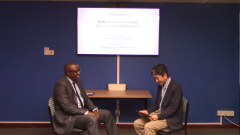Modern spin-based technologies rely on multiple, simultaneous phenomena that originate from the spin-orbit interaction in magnetic systems. These include damping, magnetic anisotropy, orbital moments, and spin-orbit torques that are manifested in the spin-Hall and Rashba-Edelstein effects. While cavity based ferromagnetic resonance (FMR) spectroscopy has been used to characterize magnetic materials for many decades, recent advances in broadband and phase-sensitive FMR techniques have allowed further refinement, improved accuracy, and new measurement capability. In fact, broadband FMR techniques can now precisely measure spin-orbit torques at the thin-film level without the requirement of device fabrication [1]. Broadband FMR measurements have also improved our fundamental understanding of magnetic damping. Numerous extrinsic relaxation mechanisms can obscure the measurement of the intrinsic damping of a material. This created a challenge to our understanding of damping because experimental data were not always directly comparable to theory. As a result of the improved ability to quantify all of these relaxation mechanisms, many theoretical models have been refined. In fact, this has recently led to both the prediction [2] and discovery [3] of new materials with ultra-low magnetic damping that will be essential for future technologies based on spintronics, magnonics, spin-logic and high-frequency devices. I will begin this lecture with a basic introduction to spin-orbit phenomena, followed by an overview of modern broadband FMR techniques and analysis methods. I will then discuss some recent successes in applying broadband FMR to improve our ability to control damping in metals and half-metals, quantify spin-orbit torques and spin-diffusion lengths in multilayers, and determine the interrelationships among damping, orbital moments, and magnetic anisotropy [4], [5]. The impact of these result on specific technologies will also be discussed.
Broadband Ferromagnetic Resonance Spectroscopy: The "Swiss Army Knife" for Understanding Spin-Orbit Phenomena
 Cart
Cart Create Account
Create Account Sign In
Sign In





